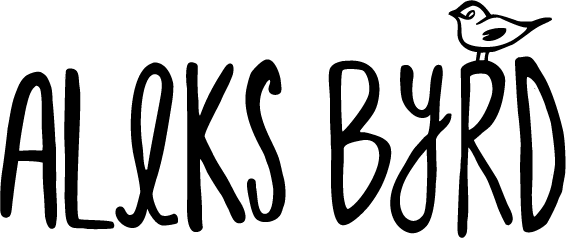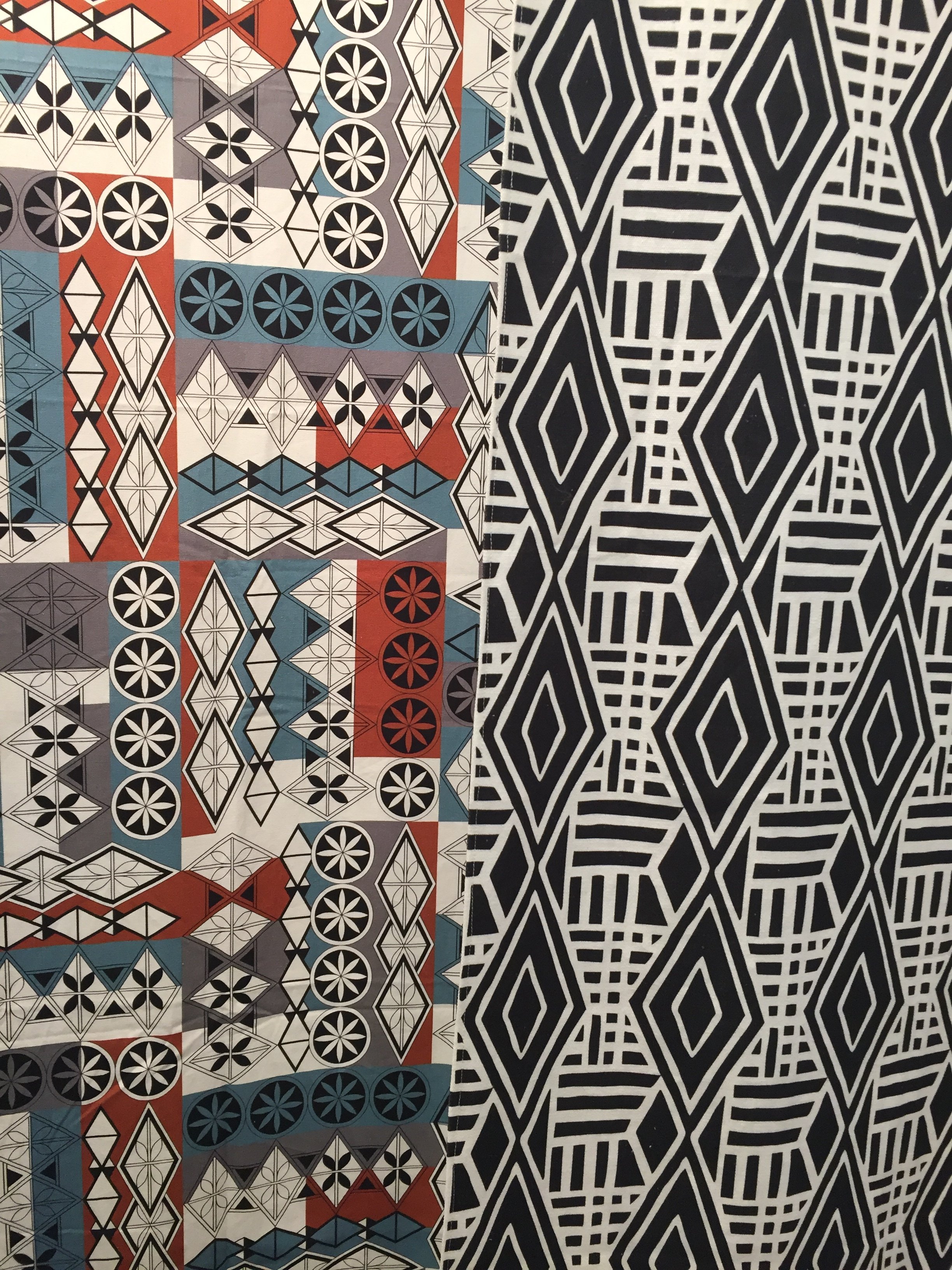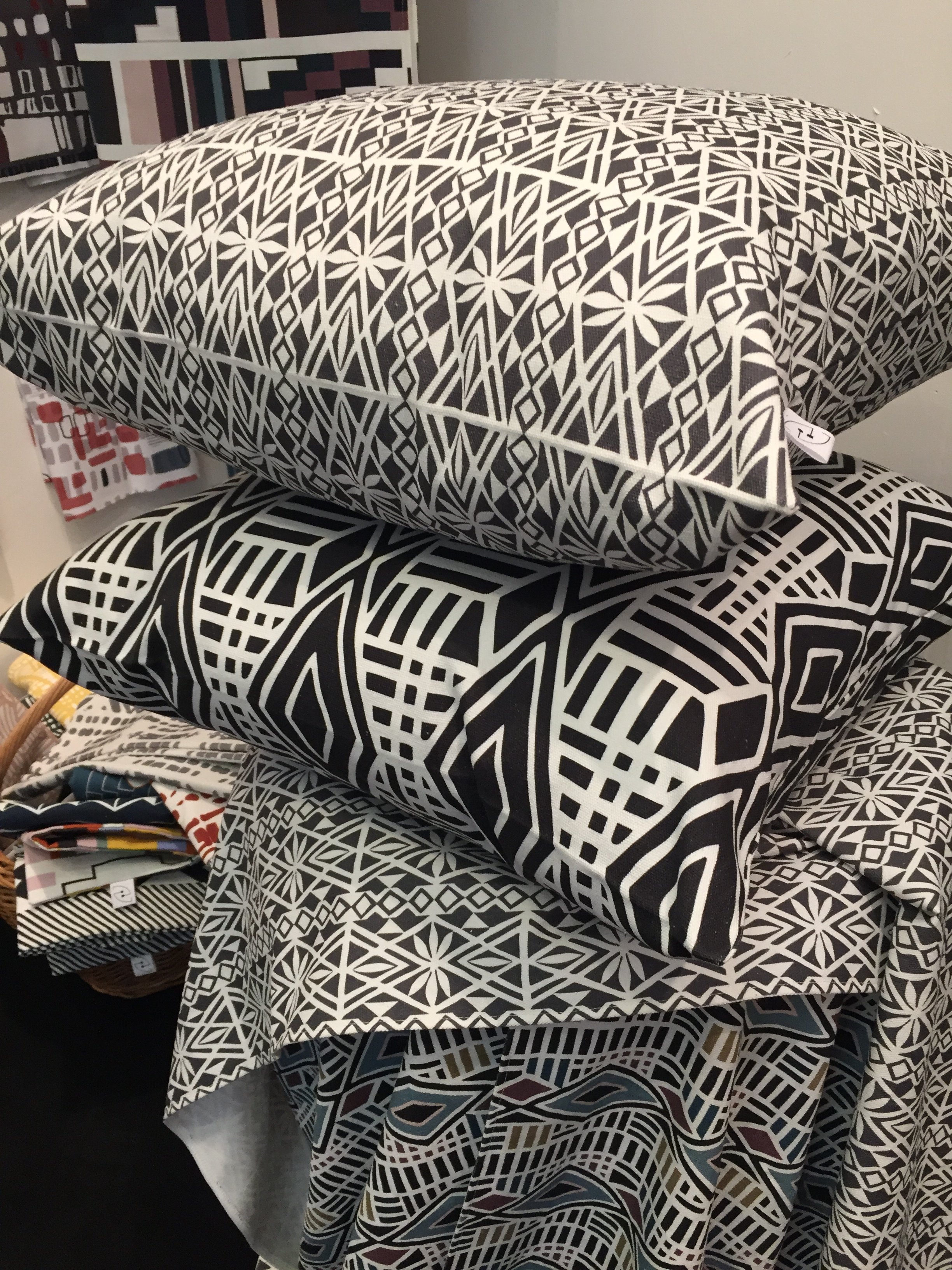London Design Fair
Photos taken by Aleks Byrd of Half- Drop textile studio stall of large swatch/ sample display and cushions showcasing Fall/Winter textile collection
I attended the London Design Fair in September where designers present their textiles and products to a market of potential customers and retailers. A common theme carried through the various stalls was a connection to one’s geographical region or roots as a source of design inspiration and or source of material. The connection to regional material, particularly design studios from the UK, used the colouring of the material, the natural colours, as a key attribute to the design of the textile or product.
Half Drop is a textile design studio from Romania creating textiles for use in interiors. This studio was exhibiting the debut of their new collection inspired by ethnic and traditional Romanian patterns about harvest time. The designers’ aim was to create a reinterpretation of these patterns and folklore in a modern and colourful way. These patterns play with the balance of how traditional and modern a design can be. The patterns are digitally printed on cotton from hand drawn sketches that have been manipulated and collaged digitally. The collaging of patterns plays with the scale and varying directionality of the repeating motifs. This collaging practice reflects a bricolage or multi-method practice of piecing together motifs by means of collage construction as well as overlapping traditional motifs with modern techniques and perspectives (Gray and Malins 98, p74). The designer's of this collection were focused on the modern, commercial aspect of the textile in its presentation rather than engaging in-depth about the folklore/origin. They are proud about their heritage of being Romanian and recreating Romanian patterns, but engage with the public in a way that focuses more on the design aesthetic than cultural origins to appeal to a wider market audience. It is a methodology of action of creating upon reflection of tradition. Considering this balance, can referencing tradition hinder or elevate design in studio practice and marketability? Is there fluidity in the concept of tradition that can include new interpretations?
These questions brought me back to the quote I originally found from KnitBritish blog when I was writing the post Tradition in Knitting, (West 2012, p13), about the theme of origin and tradition is proposed to being more open and flexible by the concept fluidity of tradition in design and distance created by time.
Change within tradition tends not to be revolutionary, or even rapid, but incremental, considered, evolutionary. That is not to say that radical new ideas or approaches do not appear within a tradition on occasions. They do, but time tends to be a judge, the barometer of acceptability, the arbiter of taste. Roots are important, as is an appreciation of where things come from, where we stand within the stream and how to use that knowledge to create fresh and meaningful art going forward. Tradition, then, can be of great use in a liquid modern world, a questioning, solidifying force […] it can still help us to move forward, to move positively and to embrace the future with the confidence that comes from knowing where we’ve been.
It is a great quote to continually refer back to as I continue my research.
The Half-Drop patterns have a distinctive ethnic feel and connection to the tradition it is derived from, however the collaging presentation and colour palette make it more accessible to present day. The connection to the original tradition is not lost but revitalized. Referencing and reflecting on tradition grounds the design in something substantial and relatable, however it shouldn’t feel constraining to creativity.
References:
Gray, Carole and Malins, Julian (2004) Visualizing Research. GB: Ashgate Publishing Ltd.
West, Gary. (2012) Voicing Scotland: Folk, Culture, Nation. GB: Luath Press Limited. Available at: https://books.google.co.uk/books (Downloaded : 20 October 2017)




